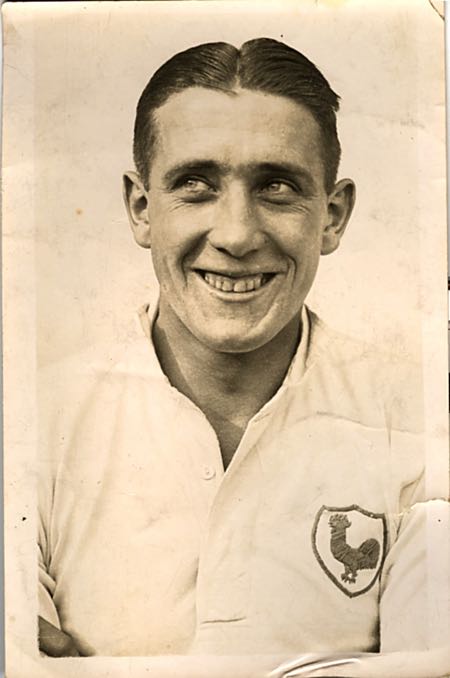Football is often referred to as the beautiful game, with the origins of the phrase dating back to the stunning team play of the Brazilian national team in decades gone by – juega bonito, being the translation from Portuguese. For those that treasure the most captivating moments in football, it gets little better than a flowing team move – passing and movement being the key principles of that. Many of the best-loved teams in football history have played the sport in such technicolour fashion, with the one-two being a move that is synonymous with the beautiful game.
Pass and Move
So, what is a one-two in football? Player A receives the ball and looks to progress their team up the pitch in swift fashion. They pass the ball to Player B but keep on moving forwards into space, which Player B recognises. They then knock the ball back to Player A first time, creating a one-two – or ‘push and run’ or ‘give and go’ as it used to be known decades ago.
It is one of the principles of football that are taught to budding players at a young age, because it promotes the notion of possession-based play but also quick attacking play – it is very difficult for the defending team to do anything to stop a well-timed one-two. A chain of one-twos is the epicentre of the beautiful game – a true sight to behold when the attacking team gets it right.
Who Invented the One-Two in Football?

Although the idea of the beautiful game and total football originate in Brazil and the Netherlands, respectively, it was actually an Englishman that was responsible for devising the one-two. Arthur Rowe is one of the most successful managers in the history of Tottenham Hotspur. He guided them to consecutive Second and First Division titles in the early 1950s, saving one of English football’s most storied clubs from obscurity.
Central to his philosophy of football was pass and move – best delivered via one-twos, smart positioning and rapid-fire passing sequences. Rowe is thought to have been the first manager to encourage his players to play one-twos, freeing them from the shackles of the rigidity of their position to instead exploit space on the pitch when it became available.
It is amazing how far Rowe’s influence would spread. One of his players at Spurs was Vic Buckingham, who perhaps hasn’t been given enough credit as a pioneer in world football – the Englishman went on to coach Barcelona and Ajax, where he would become a mentor of sorts to Johan Cruyff, who himself would have a huge role in the development of the elements of the beautiful game later deployed by Pep Guardiola and co.
Another student of Rowe’s was the legendary Ferenc Puskas, the incredible Hungarian player and coach. When spending time in Australia, Puskas was chauffeured around by Ange Postecoglou – who, at the time of writing, is the head coach of Tottenham. It’s incredible how football can turn in full circles!
How Do You Play a One-Two in Football?
The key thing with a one-two in football is distance – i.e. the distance between the players. If these are metres apart, the one-two simply won’t work as it will take the speed out of the movement. It is vital that the two players involved in the one-two are close together, to ensure the rapidity of the two passes, and that Player A has the space to move into to ensure that the one-two is a line breaking combination – the key outcome of the pass and move. If the play is condensed in a tight spot on the pitch, say near the touchline, a one-two becomes much more difficult to carry off.
Both of the players in the one-two combination must be sympathetic to the needs of their teammate. The vast majority of footballers have one foot that is stronger than the other, so the pass in a one-two should be directed to a colleague’s stronger side. The ‘one’ of the one-two is the key element, so this pass also needs to be accurate and of the correct weight to enable Player B to then swiftly play a return ball into the path of Player A. A well-coordinated one-two, allied with a smart third man run, can be almost impossible for the defending team to combat.
What Is a Third Man Run in Football?
As we’ve learned, one-twos require two players to have the technical ability and understanding to pull off the perfectly orchestrated pass-and-move sequence. But when you add a third player into the mix, the one-two and then three becomes such a devastating weapon. Third player runs are a relatively new phenomenon in football, even if they have been coached for a number of years – it’s just that the pattern of play was never given a name until more contemporary times.
The one-two is played between Player A and B, while meanwhile Player C is getting into a position to receive the next pass in the chain of the team move. Defenders are left with a conundrum: do they close down Player A (the ultimate recipient of a one-two) or do they try and mark Player C, who is now moving into dangerous areas. Juega bonito and total football have both incorporated elements of one-twos and third man runs, and it is these principles – separately and when combined – that have created some of the most joyous goals in the history of the game.
One of the greatest team goals in football occurred in its biggest game: the World Cup final. Brazil were taking on Italy back in 1970, and as an Italian move broke down the Brazilians set to work delivering one of the most dizzying goals you’ll ever likely to see, with clever passing interchanges, sweet dribbling and finally the third man run of Carlos Alberto, who hammers home a fine finish.

